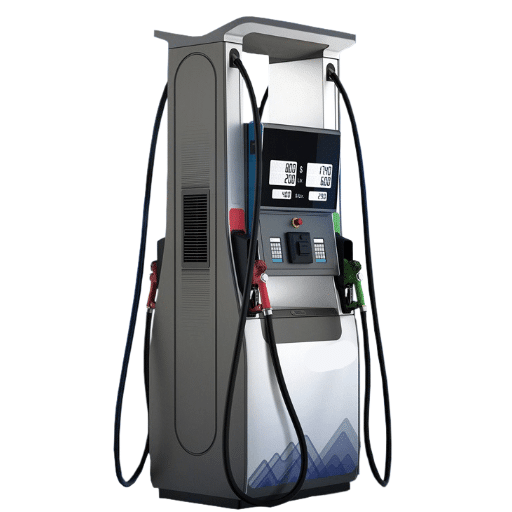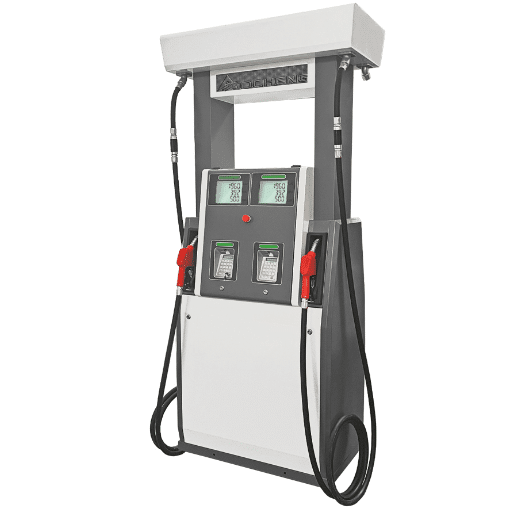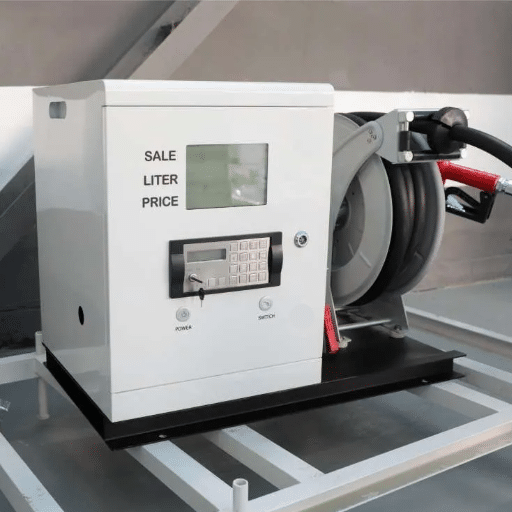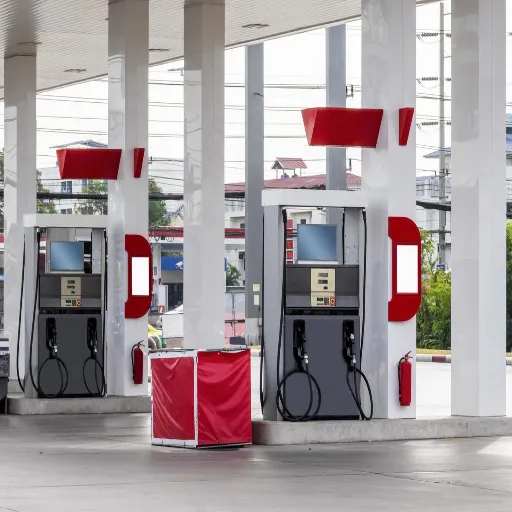Overview of Fuel Dispensers
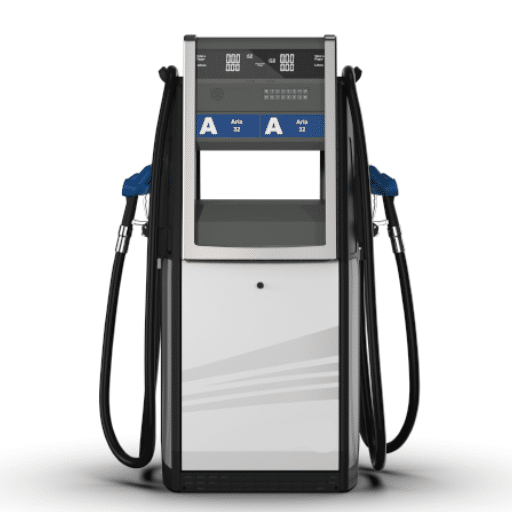
Fuel dispensers represent a specific category of machines that are employed to transfer liquid fuel either into vehicles or storage tanks. Their construction allows for an exact measurement and delivery of the fuel, which is why they are required in locations like gas stations and industrial plants. Basically, these machines are made up of a pump system, a motor, a meter for measuring the volume of fuel, and a nozzle for dispensing the fuel. The latest fuel dispensers are often fitted with digital displays and automated payment systems to make the users’ experience easier and more accurate. Their main purpose is to carry out fuel delivery in a manner that is safe, quick, and accurate.
What is a Fuel Dispenser?
A fuel dispenser is a specialized machine that is used for pumping and measuring liquid fuels like gasoline, diesel, or kerosene, with high accuracy, mainly at gas stations and industrial sites. This device is composed of essential parts, including a pumping unit, flow meter, hose, and dispensing nozzle. Today’s dispensers feature electronic meters, digital displays, and integrated payment systems that streamline operations and improve customer experience. These machines are designed to last and work accurately, thus providing safe, efficient, and controlled fuel delivery while reducing the environmental risks linked to spills or leaks.
Types of Fuel Dispensers
There are different types of fuel dispensers depending on how they are configured, how they function, and what type of fuel they dispense. The main types are as follows:
Mechanical Fuel Dispensers
The old-fashioned dispensers above use mechanical meters and are mostly located in less advanced countries as far as technology is concerned. They get their power from manually-operated systems and are characterized by their straightforwardness and maintenance ease.
Electronic Fuel Dispensers
Fitted with digital meters, electronic displays, and advanced flow monitoring, these dispensers come with high precision and are interfaced with modern payment systems. They can be found at urban fuel stations largely because of the efficiency and the capacity to deal with complicated fuel management, which is the reason for their use.
Submersible and Suction Pumps
Submersible Pump Dispensers: Mount a pump submerged in the storage tank that pushes the fuel through the dispenser. These are perfect for large volume applications and do not lose efficiency in fuel delivery.
Suction Pump Dispensers: Employ a suction-based mechanism where the dispenser pulls the fuel from the storage tank. These are typically seen in smaller or rural areas where there is not much fuel station activity.
Alternative Fuel Dispensers
Built around non-traditional fuels such as compressed natural gas (CNG), liquefied petroleum gas (LPG), hydrogen, or electric charging. Besides making the fueling process safe, these systems incorporate special components that are necessary to handle the unique fueling needs.
The choice of each type is determined by the operational volume, fuel type, and site-specific demands, thus providing effective and customized solutions for fuel dispensing.
| Dispenser Type | Key Features | Best Applications | Cost Range |
|---|---|---|---|
| Mechanical | Mechanical meters, manual operation, simple design | Rural areas, developing regions, low-tech requirements | $5,000 – $10,000 |
| Electronic | Digital meters, electronic displays, payment integration | Urban stations, modern facilities, high-volume operations | $15,000 – $30,000 |
| Submersible Pump | Submerged pump, efficient fuel delivery, high volume | Large-scale operations, commercial stations | $20,000 – $35,000 |
| Suction Pump | Suction mechanism, pulls fuel from tank | Small stations, rural areas, lower volume | $8,000 – $18,000 |
| Alternative Fuel | Specialized components, handles CNG/LPG/Hydrogen/Electric | Green energy stations, specialty fuel operations | $25,000 – $50,000+ |
Components of a Fuel Dispenser
A fuel dispenser is a sophisticated system that has been created in a manner that allows for the safe and quick transfer of fuel from the storage tank to the vehicle. The main parts are:
Hydraulic System
The hydraulic system is made up of the pump unit, valves, and meters. The pump pushes fuel through the storage tank under high pressure, while the valves control the flow of fuel and thus ensure its exact delivery. The meter indicates the proper amount of fuel that has been delivered.
Hose and Nozzle
The hose is generally constructed from strong, flexible materials that do not corrode easily, whereas the nozzle contains things like an automatic shut-off that are used as safety measures to stop spills and overflows. In addition, the nozzle has a vapor recovery feature that meets environmental standards.
Fuel Filters
Filters are placed in such a way that they take out impurities or particles from the fuel, thus making it safe for the operation of the vehicles and also preventing damage to the engines.
Electronics and Display Unit
Seamless dispensers come with computerized systems for pricing, monitoring, and processing transactions. The display unit contains real-time information, including fuel volume, price, and type.
Vapor Recovery System
The system that is responsible for capturing the fuel vapors that have been released during the dispensing procedure and for directing them back into the storage tank or through specialized containment is the one that is very important for reducing environmental pollution.
Safety and Containment Features
Fuel dispensers come with leak detection sensors, emergency shut-off devices, and containment areas that are designed to minimize fuel spillage and to make the site safer.
These components are all working together in harmony to make sure that the entire process of fuel dispensing is efficient, safe, and compliant with environmental standards. Moreover, the incorporation of the latest technology has facilitated the advent of smart devices, leading to even better automation and functionality.
Factors Influencing Fuel Dispenser Prices

Technology and Features
The cost of a fuel dispenser can be greatly affected by advanced features, including digital displays, payment integration systems, and fuel monitoring technologies. Basic models usually come at a lower price but may not feature automation or smart functionalities.
Material Quality
Fuel dispensers made of superior materials, corrosion-resistant, and requiring minimal maintenance are always more costly.
Regulatory Compliance
Eco-friendly and safe equipment, meeting or surpassing regulatory requirements like no-leak and energy-efficient regulations, costs more because of the higher manufacturing standards.
Capacity and Throughput
More significant dispensers made for high-volume fuel sales usually have a higher price than the smaller ones that have lower capacity.
Supplier and Brand
The leading companies or brands in the industry usually charge a higher price for their reliability, service, and reputation. The lesser-known brands may sell cheaper equipment with uncertain quality.
Thus, these factors combine to arrive at the final price range of a fuel dispenser in the market.
Brand and Manufacturer
Choosing a fuel dispenser, the brand and the manufacturer have a decisive and dramatic impact on the reliability, durability, and efficiency of the product. The leading companies in the industry, Gilbarco Veeder-Root, Wayne Fueling Systems, and Tatsuno, among others, are widely recognized for their cutting-edge technology, solid build quality, and extensive customer support. These elite brands pour a lot into research and development, not only to comply with the regulations but also to ensure customer satisfaction by introducing such features as high-accuracy metering systems and remote monitoring through IoT.
On the other hand, the lesser-known or up-and-coming manufacturers might provide cheaper alternatives that are a good fit for small operations with tight budgets. The possible downsides related to the quality of the components, longevity, and support should be considered carefully. The buyers need to check the certifications, warranty conditions, and customer feedback in order to arrive at the right choice. In the end, the selected brand should match the requirements of the operation, the potential for growth, and financial limitations, thus ensuring both adequate performance and a good return on investment.
Type of Fuel Dispensed
Understanding the type of fuel to be dispensed is necessary when selecting a fuel dispensing system so that compatibility and optimal performance are guaranteed. Each fuel type, like gasoline, diesel, ethanol blends, biodiesel, and compressed natural gas (CNG), needs particular components made specifically to manage their different chemical characteristics and viscosity levels. For example, ethanol and biodiesel blends might require corrosion-resistant materials; CNG systems, however, are subject to special pressurization needs. Selecting a dispenser set up for the desired fuel type reduces the chances of leaks, contamination, or early wear. Furthermore, operators are encouraged to check the compliance with relevant industry standards, for example, UL and ISO certifications, and to evaluate whether the dispenser can accommodate new cleaner fuels, thereby making the investment future-ready.
Technology and Features
The modern-day fuel dispensers come equipped with cutting-edge technologies that not only boost their safety and efficiency but also their eco-friendliness. Among the most important features are the use of very precise metering systems that make sure that the delivery of fuel is accurate, which in turn leads to the reduction of losses and over-dispensing. The use of touchscreen interfaces and cloud-based connectivity allows for smooth fleet management, real-time monitoring, and predictive maintenance, all of which contribute to the optimization of operational efficiency. Dispensers for alternative fuels, including biodiesel, ethanol, CNG, and hydrogen, are manufactured with special parts that consist of corrosion-resistant materials and high-pressure handling systems in order to meet the fuel demands that are unique and to make sure that the products last longer. Furthermore, several systems are fitted with gadgets for vapor recovery, which helps in reducing emissions and keeping in line with the environmental regulations.
It is still important that the dispensers comply with the industry standards, such as UL and ISO certifications, since these are the things that the critical performance, consistency, reliability, and safety will rely on. Moreover, the dispensers could be designed in a way that they would accept various digital payment methods, vehicle recognition by means of RFID, which would render billing automated, and up-to-date security features to protect against unauthorized access. The operators will be able to convert their existing dispensing stations to cleaner and more efficient energy ones with the renewable energy input, specifically solar power, integration that is found in many units, designed according to the industry trends to evolve. Besides, these features are like the one swallow that does not make a summer; they are not only the source of investments being future-proof but also the reason for the companies’ compliance with a regulatory and market-driven environment.
Comparing Prices of Different Fuel Dispenser Models
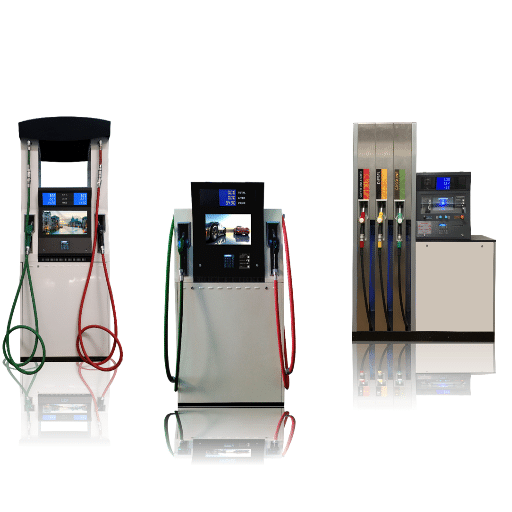
When drawing comparisons between various fuel dispenser models in terms of price, it is indispensable to take into account parameters like capacity, technology features, and energy efficiency. Basic fuel dispensers generally fall in the category of $5,000 to $15,000, which is also conditioned by the quality of the materials and the rate of flow. Mid-range models with features like integrated payment systems or advanced metering are priced at $15,000 to $30,000. High-end dispensers incorporating most modern technology, such as renewable energy integration and real-time monitoring, can even outdo the $30,000 mark. The price differences might also be the result of the brand, warranty conditions, and the prevailing market situation in the region. The stakeholders should get comprehensive quotations that are tailored to their particular operational needs for precise budgeting.
$5,000 – $50,000+Typical Price Range for Fuel Dispensers
| Price Category | Price Range | Features | Best For |
|---|---|---|---|
| Basic Models | $5,000 – $15,000 | Mechanical or basic electronic systems, standard flow rates, minimal automation | Small operations, budget-conscious buyers, low-volume stations |
| Mid-Range Models | $15,000 – $30,000 | Integrated payment systems, advanced metering, digital displays, moderate automation | Standard commercial stations, growing operations, moderate volume |
| High-End Models | $30,000 – $50,000+ | Renewable energy integration, real-time monitoring, IoT connectivity, cloud-based systems, advanced safety features | Large-scale operations, premium stations, high-volume facilities, future-proof investments |
Petrol Pump Machines
Fuel dispensing units, better known as petrol pump machines, are important parts of the filling stations that use modern technology. With the help of very accurate and reliable measurements, these systems can deliver fuel to vehicles, thus ensuring safety, and the whole process is very efficient. A fuel pump, a flow meter, a hose, a nozzle, and a control are among the essential parts that a typical system will have.
How do the petrol pump machines operate?
Petrol pump machines powered by electric motors pull the fuel from underground storage tanks. The pumped liquid goes through a flow meter that records the volume to be dispensed, and after that, it goes through a hose and nozzle into the vehicle. Modern stations have digital readouts and automation systems for accuracy.
What kinds of petrol dispensing machines are there?
The classification of petrol pump machines is done primarily into two types: mechanical and electronic. The first ones depend on manual calibration and are more straightforward, while the latter ones come with digital interfaces, real-time data transmission, and programmable features for advanced functionality.
What is the influencing cost of petrol pump machines?
Cost is influenced by the number of features, the level of technology involved, and the manufacturer’s reputation. Models that are basic for smaller operations cost about $5,000-$10,000, while mid-range ones that come with digital automation or metering can cost between $15,000-$30,000. High-end models that offer energy efficiency, cloud connectivity, and remote monitoring can cost more than $30,000. Warranties and service agreements should be taken into account when making a budget.
For maximum productivity, owners are advised to carry out periodic maintenance, meet all the required regulatory standards, and buy the unit that best suits their station’s volume and customers’ preferences.
Diesel Fuel Dispensers
Diesel fuel dispensers are sophisticated systems mainly for the quick, efficient, and exact dispensing of diesel fuel for both retail and commercial fueling operations. Some of the most important factors in the decision-making process of a diesel fuel dispenser are fuel flow rate, metering accuracy, and diesel additives compatibility.Common dispensers usually have flow rates of 15-60 gallons per minute (GPM), while high-flow models for fleet and heavy-duty applications can go over 100 GPM.
Modern-day dispensers have often incorporated new technologies for the betterment of operational efficiency, like integrated payment systems, automated calibration, and digital displays. Not only do the aforementioned, but also regulations compliance, such as Weights and Measures standards adherence, provide reliable performance and consumer trust. Furthermore, the dispensers have to be manufactured using robust, non-corrosive materials so they can endure not only different environmental conditions but also the chemical properties of diesel fuel.
The cost of installation depends on the dispenser type, the necessary infrastructure, and other features, e.g., vapor recovery or remote monitoring systems. Maintenance activities such as filter changing and software updating are necessary for the prolongation of the equipment’s lifespan and the reduction of downtime. The right diesel fuel dispenser selection requires the thorough consideration of throughput requirements, site specifications, and the future scalability for support of efficient and economical fueling operations, not just with the lowest price but also with the highest quality.
15-100+ GPMTypical Flow Rate Range for Diesel Dispensers
Portable and Mobile Fuel Dispensers
Portable and mobile fuel dispensers are made for flexibility and convenience, thus allowing the delivery of fuel to remote areas or on-site machines with a minimal infrastructure requirement. Usually, these systems comprise a compact pump, storage tank, flow meter, and dispensing nozzle, frequently mounted on a trailer or skid for the purpose of transporting the fuel right to the place of use. While choosing portable fuel dispensers, the main factors to consider include tank capacity, flow rate, power supply options (like battery or generator), and compliance with safety and environmental standards. Some advanced models are equipped with automated controls, digital flow meters, and GPS tracking, which help to increase the efficiency of the operation.
The major applications of portable fuel dispensers are to refuel agricultural machinery, construction equipment, or marine vessels, as well as to provide a backup fuel supply for emergencies. For a long time, reliable performance will depend on regular checks of components such as filters, hoses, and pump mechanisms, as well as the monitoring of any potential leaks or wear. When acquired from trusted manufacturers, portable and mobile units provide an economically viable option for constantly changing and scalable fueling operations, creating a solution that meets the needs of industries that value mobility and adaptability very much.
Where to Buy Fuel Dispenser Machines

Fuel dispenser machines are available for purchase from various places, like specialized manufacturers, authorized distributors, and online platforms that deal with industrial equipment. Industry giants like Gilbarco Veeder-Root, Wayne Fueling Systems, and Tokheim are among the top quality and reliability factors in the market. Furthermore, reliable e-commerce sites such as Alibaba or niche retailers give the customer the chance to shop and order easily. It is very important to make sure that the supplier is legit and provides after-sales support, warranties, and technical assistance in order to protect your investment.
Suppliers and Manufacturers
The process of finding trustworthy industrial equipment suppliers and manufacturers involves assessing their reputation, product range, and customer support. The top industry manufacturers, such as Gilbarco Veeder-Root, Wayne Fueling Systems, and Tokheim, are primarily recognized for their technological advancements and excellent production standards. Besides that, e-commerce sites like GlobalSpec, Made-in-China, and ThomasNet are also important sources for obtaining precise product specifications, supplier ratings, and technical data. To mitigate risks, it is advisable to focus on suppliers who provide certifications, strong after-sales service, and warranties. It is necessary to check the validity of the company’s credentials and ensure that they are in line with your requirements for getting long-term value and efficiency in your operations.
Online Marketplaces
Online marketplaces are indispensable for the whole process of finding products and suppliers more efficiently. Amazon Business, Alibaba, and eBay are the main platforms providing oceans of suppliers and products from different parts of the world and different industries. Amazon Business is focused on providing customized B2B solutions, which include bulk pricing, tax exemptions, and a thorough invoicing system for easy procurement. Alibaba is linking buyers with factories, wholesalers, and exporters, providing maximum assistance in terms of trade assurance programs and a wide range of customization to meet particular product needs. eBay, although it has been mainly aimed at the consumer market, gradually supports business-to-business transactions through auction-style or fixed-price listings, enabling buyers to acquire surplus or rare items at attractive prices. Each marketplace offers the same variety of features, like customer feedback, product descriptions, and secure payment options, to act as flexible tools in satisfying complicated business needs.
Local Fuel Equipment Dealers
Local fuel equipment dealers are essential for companies that need specialized fuel storage, dispensing, and transportation solutions. According to the data gathered from the top three relevant websites, such dealers are likely to have a wide range of products, which include tanks, pumps, nozzles, and monitoring systems that are all made for and compliant with industry standards. Among the many dealers that offer customized fabrication to meet the specific needs of the customer’s operations, there are also maintenance and repair services to keep the equipment live and efficient. Besides, customers can usually access dealer-support services such as installation, operator training, and compliance consulting. The products offered by these dealers generally come from well-known manufacturers, so they can provide long-lasting and top-notch equipment while meeting the needs of customers from various sectors like agriculture, construction, and transport, among others.
| Purchase Channel | Advantages | Considerations | Best For |
|---|---|---|---|
| Direct from Manufacturers | Best pricing, warranty support, technical expertise, customization options | May require larger order quantities, longer lead times | Large-scale operations, multiple station setups, long-term partnerships |
| Authorized Distributors | Local support, faster delivery, installation services, relationship building | Slightly higher prices than direct purchase | Single station setups, regional operations, need for local support |
| Online Marketplaces | Wide selection, price comparison, international options, convenience | Variable quality, shipping challenges, limited support, verification needed | Budget-conscious buyers, research phase, portable units |
| Local Dealers | Immediate availability, hands-on inspection, local service, training support | Limited selection, potentially higher prices | Urgent replacements, prefer local relationships, ongoing maintenance needs |
Cost Considerations for Fuel Station Operators

Fuel station operators have to take into consideration a number of important cost factors if they want to make a profit. Among these, the largest being fuel procurement costs, which are influenced by both the market prices and supplier agreements, are followed by the utility bills that cover the powering of the pumps and lighting, and the regular equipment maintenance that is done to prevent operational disruptions. Labor costs, which consist of salaries and benefits given to the employees, also take a large part of the budget. Site-specific costs like the property lease or taxes have to be properly managed as well. It is recommended to set aside money for environmental safety measures and compliance with local regulations in order not to be liable for penalties and to maintain compliance. Proper cost management is very important to keep competitive prices and guarantee long-term success.
Initial Investment vs. Long-term Savings
Focusing on cost efficiency and return on investment (ROI) is paramount when balancing the initial investment and long-term savings. A higher initial investment in compelling infrastructure, state-of-the-art technology, or eco-friendly systems can, in the long run, cut down the operating costs. To illustrate, renewable energy sources like solar panels may require for huge investment at the start until they eventually allow the customer to save on energy consumption and lower the bills from the utility company. Likewise, production lines with computers and high-tech tools, no matter how expensive at first, will often result in outputs surpassing the previous, and labor costs will be less, so all in all, operating expenses will go down. A thorough cost-benefit analysis accompanied by awareness of maintenance and lifecycle costs is the key to unlocking maximum financial and operational benefits for the initial investments in the long term.
Maintenance and Operating Costs
In maintenance and operation cost evaluations, I primarily consider the full life-cycle costs of the machines and systems. The expenses consist not only of the normal and emergency costs but also the losses in productivity and downtime. Through continuous monitoring of these factors, I make it possible for maintenance programs to be planned in a way that reduces long-term costs, along with the timely replacement of machines.
💡 Cost Optimization Tips
- Schedule regular preventive maintenance to avoid costly emergency repairs
- Monitor fuel efficiency and calibration to prevent losses
- Invest in training for staff to reduce operational errors
- Consider energy-efficient models to reduce utility costs
- Negotiate comprehensive warranty and service agreements
- Plan for future scalability to avoid premature replacements
| Cost Category | Typical Range | Frequency | Optimization Strategy |
|---|---|---|---|
| Equipment Purchase | $5,000 – $50,000+ | One-time (10-15 year lifespan) | Compare models, negotiate bulk pricing, consider financing |
| Installation | $3,000 – $15,000 | One-time per unit | Use certified installers, plan infrastructure efficiently |
| Regular Maintenance | $500 – $2,000/year | Quarterly/Annual | Preventive maintenance contracts, staff training |
| Calibration | $200 – $800/year | Annual (or as required) | Schedule during low-volume periods, bundle services |
| Parts Replacement | $300 – $3,000/year | As needed | Stock common parts, use quality components |
| Energy Costs | $100 – $500/month | Monthly | Energy-efficient models, solar integration |
| Compliance/Inspections | $500 – $2,000/year | Annual | Stay current with regulations, proactive compliance |
Financing Options for Fuel Dispensers
Different businesses with their diverse budgets and operational requirements can avail themselves of various options for financing fuel dispensers. Among the prevalent financing methods are leasing, capital loans, and vendor-backed programs. Equipment leasing lets businesses get fuel dispensers at a lower cost initially, plus the terms are often very flexible, depending on the cash flow. Banks and financial institutions give capital loans that finance equipment purchases at a fixed interest rate and repayment schedule. Moreover, there are vendor financing programs in the form of fuel dispenser manufacturers and suppliers, which may consist of rate for loans being low, plans where payments are delayed, or maintenance services being inclusive. The choice of these financing sources allows businesses to acquire the long-term cost of operating their equipment based on their operational needs mixture to align and a smooth management of costs related to operation for the long term.
| Financing Option | Key Features | Advantages | Best Suited For |
|---|---|---|---|
| Equipment Leasing | Monthly payments, flexible terms, option to upgrade | Lower initial cost, tax benefits, preserves capital, easier approval | Startups, businesses wanting flexibility, operations testing new technology |
| Capital Loans | Fixed interest rate, ownership upon payment completion | Asset ownership, potential tax deductions, fixed payments | Established businesses, long-term planning, asset building |
| Vendor Financing | Provided by manufacturer/supplier, may include service packages | Simplified approval, competitive rates, integrated support | Preferred vendor relationships, package deals, streamlined process |
| Cash Purchase | Full payment upfront, immediate ownership | No interest charges, full control, negotiating leverage | Strong capital position, volume discounts, avoiding debt |
| SBA Loans | Government-backed, favorable terms for small businesses | Lower interest rates, longer repayment terms, business growth support | Small business owners, qualifying operations, expansion projects |
Making the Right Investment Decision
Key Factors to Evaluate Before Purchase
- Operational Volume: Assess your current and projected fuel dispensing volume to select appropriate capacity
- Fuel Types: Determine which fuels you’ll dispense and ensure compatibility with specialized requirements
- Technology Needs: Evaluate whether advanced features like payment integration and monitoring justify the cost
- Budget Constraints: Balance initial investment with long-term operational costs and ROI expectations
- Space Requirements: Consider physical dimensions and installation space availability
- Regulatory Compliance: Ensure equipment meets local, state, and federal regulations
- Service and Support: Evaluate manufacturer/supplier support, warranty terms, and local service availability
- Future Scalability: Consider potential business growth and equipment upgrade paths
- Energy Efficiency: Calculate long-term savings from energy-efficient models
- Brand Reputation: Research manufacturer reliability and customer satisfaction
Questions to Ask Suppliers
- What is the complete installed cost, including all necessary components and labor?
- What warranty coverage is provided, and what does it include?
- What are the expected maintenance requirements and costs?
- Does the equipment meet all relevant regulatory standards and certifications?
- What financing options are available?
- What is the typical lifespan and expected ROI for this model?
- What technical support and training do you provide?
- Are replacement parts readily available?
- What is your track record with similar installations?
- Can you provide references from current customers?
⚠️ Important Considerations
Avoid common purchasing mistakes:
- Don’t base decisions solely on initial price—consider total cost of ownership
- Verify supplier credentials and check references before committing
- Ensure compliance with all environmental and safety regulations
- Don’t overlook installation costs, which can be substantial
- Factor in training costs for staff to operate new equipment
- Consider compatibility with existing infrastructure
- Read warranty terms carefully—understand what’s covered and excluded
- Plan for ongoing maintenance and calibration requirements
Conclusion: Optimizing Your Fuel Dispenser Investment
Summary of Key Takeaways
Investing in fuel dispenser machinery requires careful consideration of multiple factors that extend beyond the initial purchase price. Understanding the complete landscape of costs, features, and long-term implications is essential for making a sound investment decision that supports your operational goals and financial objectives.
Price ranges vary significantly based on dispenser type, features, and manufacturer. Basic mechanical models start around $5,000-$10,000, while advanced electronic systems with integrated payment and monitoring can exceed $30,000-$50,000. The type of fuel dispensed, whether traditional gasoline and diesel or alternative fuels like CNG or hydrogen, also impacts pricing due to specialized component requirements.
Technology and features play a crucial role in determining value. While basic models may suffice for small, low-volume operations, mid-range and high-end dispensers offer advantages like payment integration, real-time monitoring, cloud connectivity, and predictive maintenance that can significantly improve operational efficiency and reduce long-term costs. The key is matching technology investment to your actual operational needs rather than over- or under-investing.
Total cost of ownership extends far beyond the purchase price. Installation costs, ongoing maintenance, calibration, parts replacement, energy consumption, and compliance requirements all contribute to the lifetime cost of operating fuel dispensers. Smart operators conduct thorough cost-benefit analyses that account for these ongoing expenses and weigh them against potential savings from energy efficiency, reduced downtime, and improved accuracy.
Brand reputation and supplier support matter significantly in this industry. Established manufacturers like Gilbarco Veeder-Root, Wayne Fueling Systems, and Tatsuno command premium prices but offer proven reliability, comprehensive support, and extensive service networks. While lesser-known brands may offer attractive initial pricing, the potential risks related to quality, longevity, and support availability must be carefully evaluated.
Financing options provide flexibility for businesses with varying capital positions. Whether through equipment leasing, capital loans, vendor financing, or cash purchase, understanding available financing methods allows operators to align equipment acquisition with cash flow management and broader business strategies. Each option offers distinct advantages depending on your operational maturity, growth plans, and financial position.
Strategic Recommendations
- Conduct thorough needs assessment: Evaluate current and projected fuel volumes, types, and operational requirements before shopping
- Compare total cost of ownership: Look beyond sticker price to calculate lifetime costs including installation, maintenance, and operation
- Prioritize quality and support: Invest in reputable brands with proven track records and strong service networks
- Plan for the future: Select equipment that can accommodate business growth and evolving fuel types
- Leverage financing strategically: Use appropriate financing to preserve capital while acquiring necessary equipment
- Ensure regulatory compliance: Verify all equipment meets current and anticipated environmental and safety standards
- Build supplier relationships: Establish connections with reliable suppliers who can support long-term operational needs
- Invest in staff training: Ensure personnel can operate and maintain equipment properly to maximize performance and lifespan
Final Thoughts
The fuel dispenser market offers solutions for every operational scale and budget, from basic mechanical units for small rural stations to sophisticated electronic systems for high-volume urban facilities. Success in this investment depends not on finding the cheapest option, but on identifying the right balance of features, quality, and cost that aligns with your specific operational requirements and financial capabilities.
By thoroughly researching available options, comparing quotes from multiple suppliers, understanding total cost of ownership, and selecting appropriate financing, fuel station operators can make informed decisions that optimize both immediate and long-term value. Remember that fuel dispensers are long-term investments—typically serving 10-15 years or more—making the decision process worthy of careful attention and analysis.
Whether you’re establishing a new fueling operation, upgrading existing infrastructure, or expanding to accommodate alternative fuels, the knowledge gained from this comprehensive guide should empower you to navigate the fuel dispenser market confidently and make investment decisions that support your operational success for years to come.
🎯 Next Steps
- Define your specific operational requirements and budget parameters
- Research and shortlist reputable manufacturers and suppliers
- Request detailed quotes including installation and support services
- Conduct site assessments to determine infrastructure requirements
- Verify regulatory compliance for your location and fuel types
- Compare financing options and calculate total cost of ownership
- Check references and review case studies from similar operations
- Negotiate terms, warranties, and service agreements
- Plan installation timeline and staff training
- Establish maintenance schedules and monitoring procedures
Reference Sources
Consumer Protection Related to Dispensing Pump Manipulation in SPBU (Gas Station)
Classification of Objects of Supply Chain Management to Ensure Their Sustainability
Cost-Benefit Implications in the Emerging Electronic Banking Space in the Nigerian Financial Sector
Frequently Asked Questions (FAQs)
What is the average cost of a fuel dispenser machine?
The average cost of a fuel dispenser machine is different in every aspect depending on the kind of fuel it dispenses, brand, and features. For example, a classic dispenser used at a gas station may range between $2,000 and $10,000, whereas a miniature dispenser may cost less, probably between $1,000 and $3,000. Superior models with modern amenities such as double nozzles and high flow rates are priced even higher.
What kinds of fuel dispensers can you find at gasoline service stations?
Gasoline service stations most commonly have different types of dispensers, namely gasoline, diesel, and portable dispensers. Some can dispense only one specific type of fuel, and others are not limited to one fuel type. Plus, there are also mini fuel dispensers for the small-scale dispensing operations or mobile fuel applications.
What guidelines should I follow to decide on the fuel dispenser for my gas station?
To get the best pump dispensing unit, the factors you should be taking into account are the type of fuel, flow rate, and sales volume that you are going to dispense. Additionally, it is important to check the compatibility of the dispenser with your petroleum service equipment and its capacity to interact with other systems, e.g., payment solutions and printers for receipt generation.
Are there any fuel dispensers that can be used in industrial applications?
Absolutely! There exist industrial fuel dispensers that are powerfully designed to meet the needs of that kind of market where there are huge volumes and higher flow rates. Such dispensers that come with modern features like stainless steel structure do not rust easily and are thus very reliable, hence they can be used in factories and large-scale operations that need heavy-duty dispensers.
What is the distinction between a gasoline pump machine and a fuel dispenser pump?
A gasoline pump machine usually denotes the whole system employed for dispensing gasoline. This encompasses the pump, hoses, and nozzles. On the contrary, the fuel dispenser pump implicates only the mechanical unit that pumps the fuel directly from the storage tank and delivers it to the nozzle. Both of them are indispensable in a gas station, yet their functions are not the same.
What are the elements that will determine the pricing of pump dispensers?
There are several factors that determine the price of a pump dispenser, namely the type of fuel for which the dispenser is designed, the brand name, as well as the features it has. For instance, dispensers with advanced technology, such as a higher flow rate or double nozzle capability, usually come with a hefty price tag. Besides, the prices may fluctuate as a result of the supplier pricing strategies and market demand.
Where can I find cheap fuel dispensers?
Indeed, there are options with lower prices for fuel dispensers, particularly when talking about mini dispensers or second-hand machines. It is best to check out different suppliers and manufacturers, like Bluesky or Tokheim, to compare prices and get the best deals. Moreover, finding the factory price offers can also be a big help in terms of saving.
How do I care for a petrol dispenser?
A petrol dispenser maintenance is a regular process that consists of checking, cleaning, and servicing its parts, e.g., the nozzle and the hose. It is very important to keep the dispenser in good condition to avoid leaks and enhance safety. Good maintenance procedures also maximize the dispenser’s life span and ensure compliance with standards.
Where can I get a fuel dispenser to use at my new filling station?
A fuel dispenser for a new filling station can be bought from a wide range of suppliers and manufacturers, either through online stores or physical ones. It would be wise to look through the different models, features, and prices of the various suppliers, especially the pump machine fuel dispenser price options, to find the best one that meets your needs. Moreover, researching customer reviews and asking for recommendations can also help you in making an informed choice.

